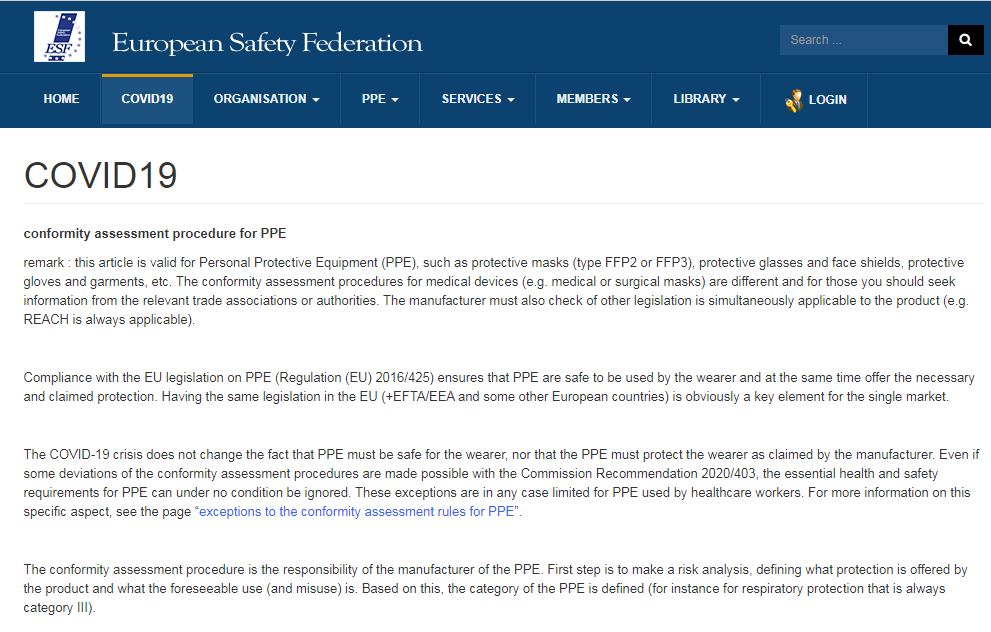Reach standard regulations
Due to the epidemic, the market demand for epidemic prevention products has also increased. Recently, the European Security Alliance, which is the hardest hit by the epidemic, published an article on its official website that clearly stated that personal protective equipment (PPE) such as protective masks must meet the requirements of reach standards and regulations.

Personal protective equipment (PPE), such as protective masks, protective gloves and clothes, etc., this article is all applicable. Because the conformity assessment procedures of medical equipment masks are different, it is quite necessary to seek information from relevant trade associations or authorities regarding masks. The manufacturer must also check other regulations that also apply to the product (for example, REACH always applies).
The reach standard regulations were announced on December 31, 2006, and formally took effect on June 1, 2007. In order to ensure the smooth implementation of this regulation, the European Union established a competent authority, the European Chemicals Agency (ECHA), which officially operated on June 1, 2008. REACH is the abbreviation of EU Regulation (EC) No. 1907/2006 "Registration, Evaluation, Authorization and Restriction of Chemicals".

For products to be placed on the EU market, all chemical-related obligations under the law must comply with REACH regulations. The range of products regulated by REACH regulations is very wide, covering various products such as electrical and electronic products, chemical products, automobiles, toys, furniture, textile products and so on.
According to the REACH regulations, products can be divided into three types: substances, mixtures and articles. Different types of products have different requirements.
How are the three types of products defined?
Substances, such as cadmium, copper sulfate, etc., are chemical elements or compounds derived from the natural state or the manufacturing process. It includes any additives that need to maintain its stability and impurities introduced during the production process, but does not include any solvents that can be separated without affecting the stability or composition of the material.
Mixture, such as: paint, alloy, cleaning agent, etc., a mixture or solution composed of two or more substances.
Items, such as: computers, mobile phones, motors, gears, power cord plugs, packaging materials, etc., a product is given a specific shape, surface or design during the production process, and these shapes, surfaces or designs are to a greater extent than its chemical composition Determines its function.
The protective equipment we mentioned at the beginning is an article.
What are the requirements of REACH for hazardous substances? Can the concentration of SVHC candidate substances in the product not exceed 0.1% to be considered to meet the requirements of REACH?
The requirements of the REACH regulations on hazardous substances mainly involve two substance groups, SVHC candidate substances and Annex XVII restricted substances. Products exported to the EU must consider these two requirements at the same time. If the product falls into the category of "articles" and a certain SVHC candidate substance>0.1%, the product can be sold in the EU, but it needs to fulfill the obligation of notification. When the SVHC candidate substance>0.1% and the export volume>1 ton/year, it can be sold after notification to the European Chemicals Agency. Restricted substances are listed in Annex XVII of REACH Regulation. When substances, mixtures or articles contain restricted substances in Appendix XVII, they cannot be placed on the market if they cannot meet the limit requirements. Therefore, if the concentration of SVHC candidate substances in the product does not exceed 0.1%, it is not equivalent to meeting the REACH regulations. It is also necessary to evaluate whether the product may violate the restricted substances clauses in Appendix XVII, and if necessary, test whether it meets the requirements of Appendix XVII.

